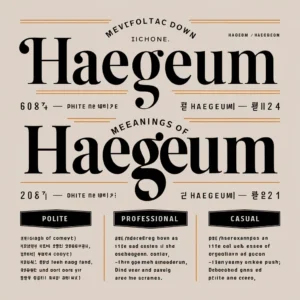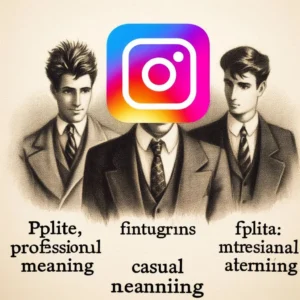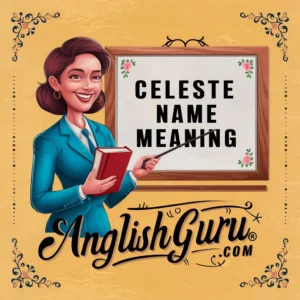Introduction
Language is constantly evolving, and so is the way we use words in texting, online chats, and casual conversations. One of the intriguing expressions people often stumble upon is “anghkooey”—a term that has sparked curiosity in online communities. While its exact roots might feel unclear to many, it’s often grouped with phrases like “asl meaning in text”, which stand for identity-based inquiries such as “age, sex, location.”
But beyond the literal meaning, the way people ask, interpret, or replace these phrases in text matters. Depending on the tone, formality, and context, alternatives can range from polite and professional to casual and playful.
This article will break down:
- What “anghkooey” is commonly understood to mean.
- How “asl meaning in text” is used in different contexts.
- 20+ professional, polite, and casual alternatives you can use instead.
- 11 texting examples to show real-life usage.
- Guidance on choosing the right alternative depending on the situation.
By the end, you’ll have a clear grasp of “anghkooey meaning”, plus a toolkit of ways to express identity inquiries or well wishes naturally, without sounding awkward or outdated.
Understanding “Anghkooey Meaning”
The word “anghkooey” has surfaced in online text slang discussions, sometimes with playful or coded references. In a broader sense, people tie it to phrases like “asl meaning in text”—a shorthand way of asking someone’s age, sex, and location in online chats.
When chatting casually, many find “asl” or similar questions too direct or old-fashioned. That’s why alternatives have become popular. Instead of bluntly typing “asl?”, people look for more friendly, respectful, or modern ways to phrase it.
Why Alternatives Matter
The way you phrase a question or greeting says a lot about you. For example:
- In a professional setting, being polite and formal earns respect.
- In casual texting, being playful or friendly keeps the conversation natural.
- In online communities, using fresh alternatives avoids sounding outdated.
So, knowing 20+ ways to say the same thing differently gives you flexibility.
20+ Alternatives to “Asl Meaning in Text” (Exploring Anghkooey)
Here are 20+ polished alternatives you can use. Each comes with explanation, tone, and example.
1. May I Know More About You?
- Tone: Polite, respectful
- Why it works: It avoids being intrusive and shows genuine curiosity.
- Example: “Hey, I’d love to continue our chat. May I know more about you?”
2. Could You Share a Bit About Yourself?
- Tone: Formal but friendly
- Why it works: Encourages sharing without pressure.
- Example: “Before we dive into the project, could you share a bit about yourself?”
3. Where Are You From?
- Tone: Casual, simple
- Why it works: Instead of asking “location” bluntly, this sounds natural.
- Example: “That’s interesting! By the way, where are you from?”
4. What’s Your Story?
- Tone: Playful, conversational
- Why it works: Encourages personal storytelling rather than data sharing.
- Example: “You seem cool! So, what’s your story?”
5. Tell Me About Yourself
- Tone: Neutral (works formally or casually)
- Why it works: A classic icebreaker for conversations.
- Example: “We’ve been chatting for a while—tell me about yourself.”
6. Mind Sharing a Few Details?
- Tone: Professional, polite
- Why it works: Softens the directness of a personal question.
- Example: “Before I finalize this, would you mind sharing a few details?”
7. Where Do You Call Home?
- Tone: Friendly, warm
- Why it works: Sounds welcoming and less interrogative.
- Example: “Just curious, where do you call home?”
8. How Do You Usually Spend Your Time?
- Tone: Casual and engaging
- Why it works: Shifts from identity to lifestyle, sparking conversation.
- Example: “Nice chatting with you! How do you usually spend your time?”
9. Can You Introduce Yourself?
- Tone: Polite, slightly formal
- Why it works: Great for meetings, interviews, or chats.
- Example: “Since we’re working together, could you introduce yourself?”
10. What’s Your Background?
- Tone: Professional
- Why it works: Focuses on experiences and context.
- Example: “For better collaboration, I’d like to know—what’s your background?”
11. How Old Are You? (Polite Version)
- Tone: Direct, but softened if phrased well
- Why it works: Still addresses “age” directly but politely.
- Example: “Hope you don’t mind me asking, but how old are you?”
12. What Do You Do for Work?
- Tone: Professional or casual
- Why it works: Instead of “sex/gender,” it keeps identity neutral.
- Example: “Great chatting with you! What do you do for work?”
13. Which City Are You In?
- Tone: Friendly, specific
- Why it works: More natural than “location.”
- Example: “That sounds fun! Which city are you in?”
14. Care to Share Your Interests?
- Tone: Engaging
- Why it works: Opens space for hobbies and passions.
- Example: “We seem to have some things in common. Care to share your interests?”
15. How Would You Describe Yourself?
- Tone: Polite, open-ended
- Why it works: It lets the person choose what details to share.
- Example: “For introductions—how would you describe yourself?”
16. What Should I Know About You?
- Tone: Casual and curious
- Why it works: Keeps it personal but relaxed.
- Example: “Hey, we’ve been talking for a bit. What should I know about you?”
17. What’s Important to You?
- Tone: Deep, thoughtful
- Why it works: Goes beyond surface-level details.
- Example: “I like meaningful chats—what’s important to you?”
18. Can You Share a Fun Fact About Yourself?
- Tone: Lighthearted
- Why it works: Makes the conversation fun.
- Example: “To break the ice, can you share a fun fact about yourself?”
19. Who Are You Outside of Work?
- Tone: Balanced professional and personal
- Why it works: Invites openness beyond job roles.
- Example: “I know your job role, but who are you outside of work?”
20. How Do You Like to Be Addressed?
- Tone: Respectful
- Why it works: Builds comfort and avoids assumptions.
- Example: “By the way, how do you like to be addressed?”
21. What Brings You Here?
- Tone: Neutral, engaging
- Why it works: Fits online chats, meetings, or community groups.
- Example: “Welcome! What brings you here today?”
11 Texting Examples (User-Friendly)
Here are 11 examples you can copy-paste or adapt in texting:
- “Hey! Just curious—where are you from?”
- “Tell me a fun fact about yourself 👀”
- “I’d love to know more—what’s your story?”
- “Quick intro? Who are you outside of work?”
- “Can you share a bit about yourself?”
- “So, which city do you live in?”
- “I like meaningful chats. What’s important to you?”
- “Mind if I ask—how old are you?”
- “Before we dive in, can you introduce yourself?”
- “Care to share your interests?”
- “How do you usually spend your weekends?”
Choosing the Right Alternative
When deciding which alternative to use, consider:
- Professional context → Use polite phrases like “Could you share a bit about yourself?”
- Casual texting → Playful lines like “What’s your story?” work best.
- Building comfort → Gentle wording like “How do you like to be addressed?” shows respect.
Final Thoughts
The phrase “anghkooey meaning” ties closely to how people interpret and replace “asl meaning in text.” While the literal shorthand “asl” is less common today, the need to ask about someone’s background, location, or personality remains timeless.
With these 20+ alternatives, plus 11 texting-ready examples, you can confidently express curiosity, politeness, and friendliness in every setting—whether chatting with a new friend, networking professionally, or joining an online group.
Language evolves, but the key is tone, respect, and context. By choosing your words thoughtfully, you make your conversations more natural, engaging, and meaningful.





